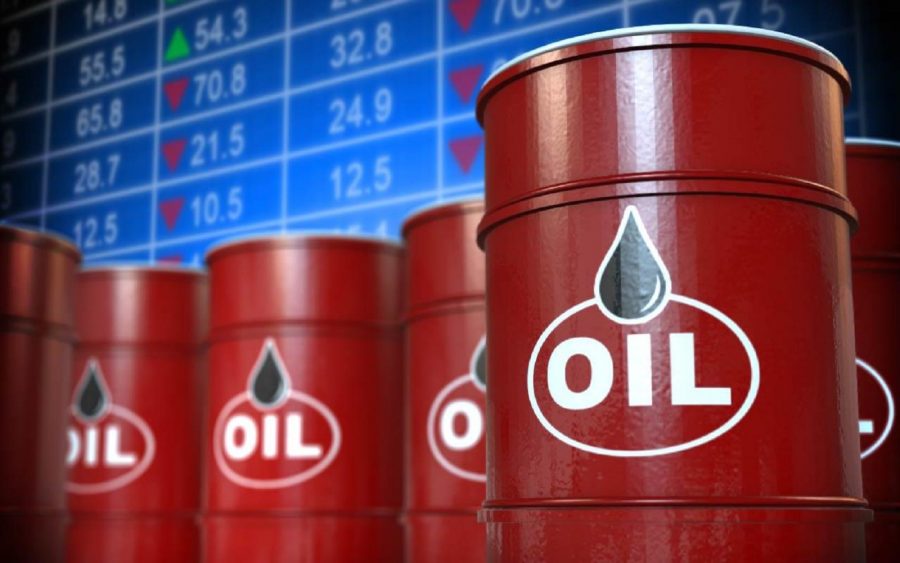Nigeria’s current economic crunch will likely continue till 2024, as oil prices are projected to decline over the next two years.
According to the World Bank‘s latest commodity markets outlook report released on October 26, oil prices will likely experience a decline from now till 2024. The report forecast that the benchmark oil price, Brent crude, could drop from $120 per barrel in June to $90 per barrel in September. The price of Brent crude oil may also average $92 per barrel in 2023 and $80 per barrel in 2024, the World Bank outlook said.
Impending global recession
Global growth has decelerated and is expected to slow further in 2023, due to synchronous policy tightening, worsening financial conditions, and declining confidence. Additional negative shocks, such as higher inflation or financial stress, could push the global economy into a recession. As the World Bank noted, global recessions have been associated with large declines in oil consumption in the past, although the severity is always varied. The largest decline in oil consumption occurred in the 1980s, with consumption falling for four consecutive years.
The Nigerian context
Since the beginning of 2022, Nigeria has failed to capitalize on the recent oil market boom due to increased crude oil theft which has hampered production. So, while other crude oil producers were gaining from high oil prices, Nigeria could not. Crude oil is the major contributor to Nigeria’s gross domestic product (GDP) as of today, so, crude oil theft has done major damage to the economy.
Despite recent developments in the Nigerian oil and gas industry (including a clampdown on illegal oil production and bunkering as well as the return of production at the Shell-operated Forcados terminal), Nigeria may not still be able to benefit from the global oil market in the next two years. As the World Bank projects, between now and 2024, energy prices will likely experience a decline, leaving Nigeria unable to make as much revenue as it could from high oil prices.
Some factors that have affected global oil prices
According to the October 2022 commodity markets outlook from the World Bank, a number of factors are responsible for the sharp decline in oil prices from February to September 2022. Some of these factors are:
- The Russia – Ukraine war: According to the World Bank outlook, between February and September 2022, oil prices have been extremely volatile as a result of the war. The price of Brent crude oil fell nearly 6% but rose by 7% on average, in advanced economies (excluding the United States) and by 3% in oil-importing emerging developing economies.
- Decreased oil production: The outlook states that global oil production rose by 2% in Q2 2022 (quarter-on-quarter) and has now recovered to its pre-pandemic levels. Half of the increase was from the Organization of Petroleum Exporting Countries (OPEC) and its partners (OPEC+), where production rose by just over 2%, as production targets were increased and Libya’s output recovered. However, most of the OPEC+ countries failed to meet their output targets. Their combined output was around 3.5 million barrels per day below their September target. In September 2022, Nigeria had one of the largest shortfalls in production at -0.9 million barrels per day. Other recorded shortfalls were from Russia at -1.3 million barrels per day, and Kazakhstan at -0.5 million barrels per day. The gap between targets and actual output has been widening since the beginning of the year, due to operational issues and capacity constraints.
- Decreased demand: Growth in oil consumption decelerated to 1% (year-on-year) in Q3/2022, from an average of 3.7% in the first half of the year, and is expected to turn negative in Q4/2022. In China, mobility restrictions and weaker economic activity have reduced oil demand by almost 7% in Q3/2022 (year-on-year). Oil demand has been more resilient elsewhere, in part because of government support in the form of gasoline tax cuts and the use of fuel subsidies.
Projections for the oil market in 2023
In its commodity markets outlook (CMO), the World Bank forecasts that Brent crude oil prices will average $92/bbl in 2023 (close to their current level), before declining to $80/bbl in 2024.
- The Bank projected the same figures in its April 2022 CMO.
- After rebounding to its pre-pandemic level by the end of 2022, oil consumption is expected to rise by 1.7% in 2023 to a new all-time high, according to the International Energy Agency (IEA). Oil consumption growth in 2023 is expected to be supported by a recovery in demand in China, as the country gradually reduces pandemic restrictions, and by increased switching from natural gas to oil.
- Outside of Asia, however, oil demand growth is expected to be negligible or slightly negative in 2023.
- Oil production is expected to see an increase of less than 1% in 2023. Only a small number of countries are expected to see a rise in production, chiefly the United States.
- In contrast, crude oil production among OPEC+ members, is expected to decrease, led by Russia. While OPEC+ announced a headline reduction in production targets of 2 million barrels per day (mb/d), which will last till the end of 2023, numerous countries are already well below target. As such, the actual reduction may be just over half of the headline number, and several countries may not see a reduction in production in 2023.
- Patterns of trade in crude oil and oil products are also likely to be altered, potentially raising transport costs.






















